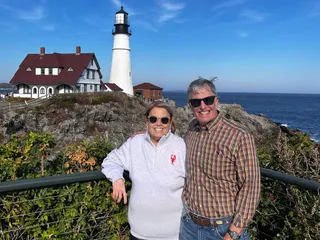Not-So-Simplified Training for eVTOL Operations
Contact Our Team
For more information about how Halldale can add value to your marketing and promotional campaigns or to discuss event exhibitor and sponsorship opportunities, contact our team to find out more
The Americas -
holly.foster@halldale.com
Rest of World -
jeremy@halldale.com

WATS Pilot Conference Session 2: The Future is Arriving
The WATS conference’s second session was a clarion call that the electric vertical takeoff and landing (eVTOL) industry is reporting advancements almost daily, with huge implications for the simulation and training industry.
Chris Courtney, Director of Advanced Mobility, Civil Aviation Solutions at CAE, set the groundwork for the session when he observed that billions of dollars are being invested in this sector. Indeed, CAE is reportedly on 50 cross-functional teams in the expanding advanced air mobility (AAM) market and is establishing partnerships with eVTOL OEMs, for instance, Joby.
Courtney then imparted his observations of the eVTOL S&T market, first busting the myth that these comparably simple air vehicles require less operator training. Indeed, the technology expert noted that while there is the need to enhance automation to help reduce the inflight workload of the single pilot, other operating forces are emerging. “The missions are more complex,” he explained, and matter-of-factly continued, the anticipated 5-to-30-minute initial missions the first tranche of eVTOLs will complete: “will have 2-4 critical phases in a matter of hours, compared to 2-4 per day in larger aircraft. And then there is congestion in the urban operating environment, with micro-weather events, and operations in the vicinity of buildings."
"We Must Customize Training For Each Learner"
The CAE executive put the community on alert that a clean-sheet design for next generation eVTOL training strategies is necessary. While flight simulation training devices must be cost-effective and high-fidelity: “we must also focus on pilot competency-based training, using data analytics, adaptive learning, and leverage advanced technologies – VR and others. We must also customize training for each leaner."
Bonny Simi, Head of Operations and People at Joby Aviation, provided a valuable OEM insight on training requirements, often mirroring the training supplier vision of CAE’s Courtney. The company is notionally planning a four-week pilot training program for experienced commercial pilots with a focus on operating in high traffic in an urban setting – for starters. "This will require high standardized training and procedures" that will be completed throughout the eVTOL pilot’s training continuum, including, in part, manufacturer-required training, training in flight simulators (Level 7/Level C), and S4 solo flight. Joby’s quickly forming training vision further includes building an academy with the expectation to graduate its first pilots in 2025-2026.
"By 2030, 55,000 Pilots Will Be Needed to Fly 11,000 vehicles"
As the legacy aviation community grapples with its current pilot shortages, José Carlos Furuzawa, Senior Innovation Manager at EVE Air Mobility, expanded the discussion envelope on the topic by telling session attendees that by “2030, 55,000 pilots will be required to fly approximately 11,000 vehicles” in the urban air mobility community.
José Fregnani, Senior Flight Engineer at EVE (an Embraer spinoff), introduced session delegates to a term gaining wider acceptance in the broader aviation community – SVO (simplified vehicle operations). The term has gained popularity by way of the General Aviation Manufacturers Association’s (GAMA) increased use of the term in its deliberations. GAMA notes: “SVO is the use of automation coupled with human factors best practices to reduce the quantity of trained skills and knowledge that the pilot or operator of an aircraft must acquire to operate the system at the required level of operational safety.” To point, for his presentation, the EVE executive noted one may also think about "deconstructing the pilot," allowing some tasks to be completed by automation or even an autonomous system. And while EVE expects to deliver 500 eVTOLs for operation by 2026, the executive emphasized: "there will be nothing simple about service."
Dr. Regan Patrick, CAE USA’s Chief Learning Officer for Defense and Security, provided vital perspectives to this commercial aviation audience on the US DoD’s journey to embrace VR and other new technology enablers – with the intent to reduce training costs, increase training throughout and gain other returns on investment. As readers of Halldale publication MS&T are aware, the US Air Force’s Rebuilding the Forge and like efforts are optimizing learning technologies, data analytics and other enablers to take that service’s pilot training to a higher plateau of efficiencies.


